Publishing link-worthy content is one of the most reliable ways to grow your site’s authority, rank, and get cited in AI search results.
But only if you know how to create, position, and promote it.
In this guide, I’ll walk you step-by-step through a proven process for finding ideas that already attract links, turning them into go-to resources, and getting them in front of the right people.
No guesswork. No generic “just create great content” advice.
Only a repeatable system you can start using today.
Step 1: Find Content That Already Earns Links
The fastest way to create link‑worthy content is to start with ideas that already attract backlinks.
If a page has dozens — or hundreds — of referring domains, people are clearly interested in that angle.
Let me show you how to find such proven topics in Ahrefs (you can replicate it in Semrush, Moz, or UberSuggest).
Use Ahrefs Content Explorer to spot link magnets (topic-first)
One way is to start by digging into content that ranks for general keywords in your niche. Like "electric vehicles."
1. Open Content Explorer and enter your core keyword. Switch the search mode to In title (to tighten relevance).

2. Set filters:
- Live pages only.
- Language = your target language.
- DR30+,
- Published date if you need recency.

3. Sort by Referring Domains (RD). This surfaces the pages earning the most unique linking sites.
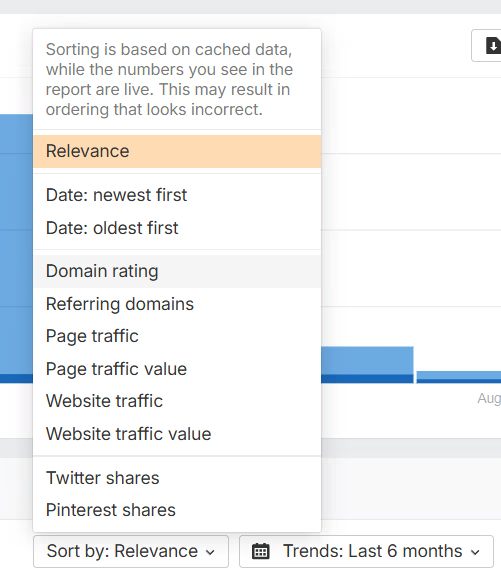
4. Skim the top results to see what kind of content attracts the most links. For example, as you can see, over 2.7k domains have linked to Bloomberg's Electric Vehicle Outlook 2025 report. That's the kind of content that attracts links.

5. Open the page in Site Explorer, open the Backlinks report, and skim linking domains and the anchor texts to better understand why people link to them.

6. Back in Content Explorer, export the top pages into a spreadsheet and note the content angle, format, and the common “link reasons” you’re seeing.
Use Site Explorer to reverse‑engineer competitors (domain-first)
Reverse-engineering your competitors' or prominent publishers' backlinks is another approach.
1. Paste the domain into Site Explorer.

2. Go to the Best by links report.
This shows the site’s most linked‑to URLs. Skim the list to understand what kinds of pages attract links.
For example, you can see below that Backlinko's most popular articles are about Google ranking factors and trends, CTR, social media usage, and backlinks.
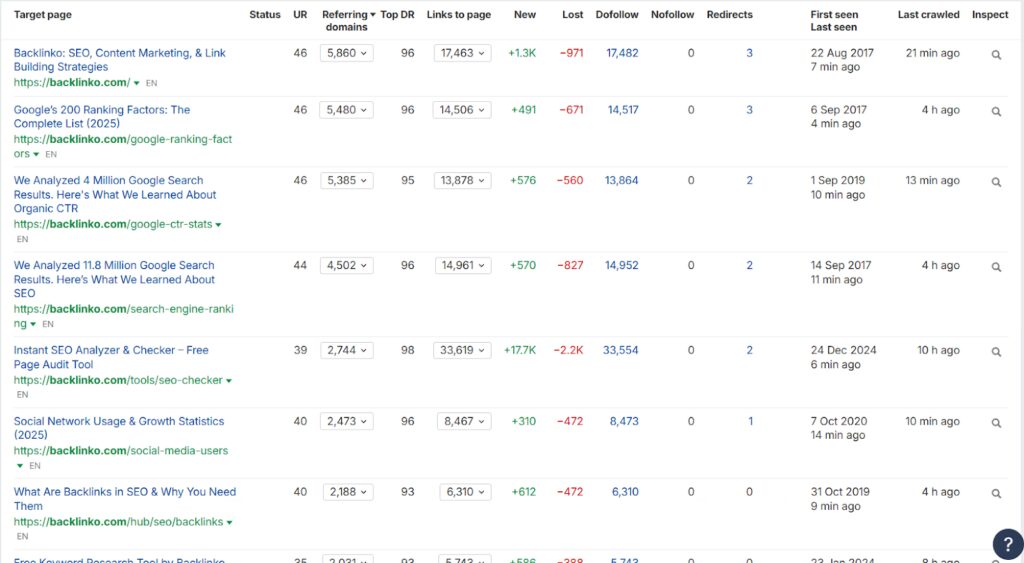
3. Click on the link count (Dofollow column) of individual pages to get a detailed Backlinks report, and filter the results.
Study linking URLs and anchor texts for deeper insight, just like above.
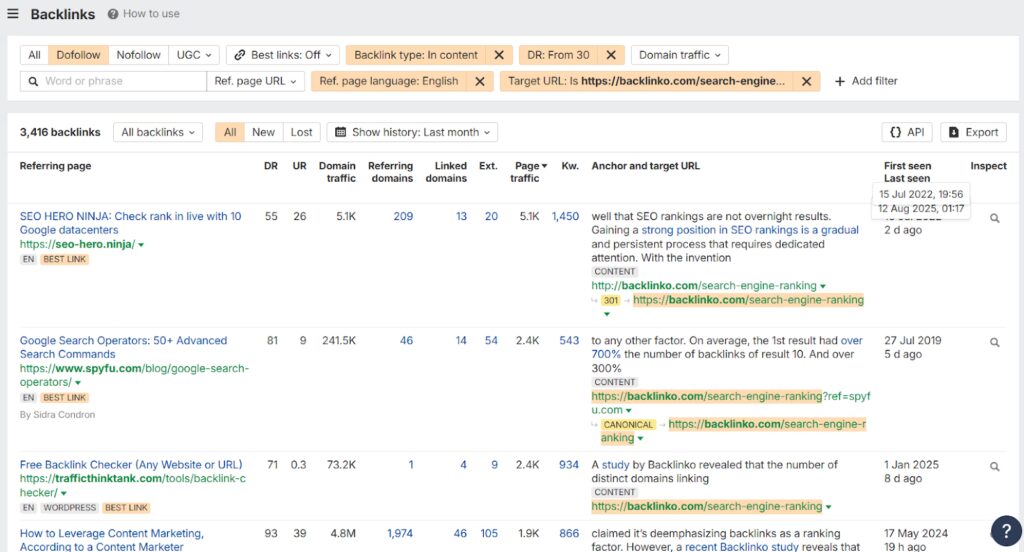
4. Export the top-linked pages. Annotate them with angle + format + link reasons.
Evergreen vs. trending topics
Evergreen angles compound slowly and keep earning links for years.
For Luke Hickman, the CMO @ Bird Marketing, the evergreen potential is one of the factors he considers when looking for topics:
I look for topics with a combination of high relevance, evergreen appeal, and data scarcity… Keyword research combined with backlink analysis of similar content helps validate potential.
When you look at Backlinko's most linked-to pages, these are all evergreen assets. For example, the guide to Google's ranking factors has been attracting links since 2017.

When you need quick velocity, lean into trending topics. Such topics can earn links fast — but may fade quickly.
That's the approach that Andrew Morton, Outreach & Content Team Lead @ Equator, favors when looking for topics to cover.
He watches:
search trend uplifts… seasonality or spikes in interest… [and] the questions that are commonly being asked.
If you switch the view in Ahrefs Backlinks from All to New, you'll see the pages that have attracted links most recently.
The dominant theme? AI search and LLMs. That's what's trending now.
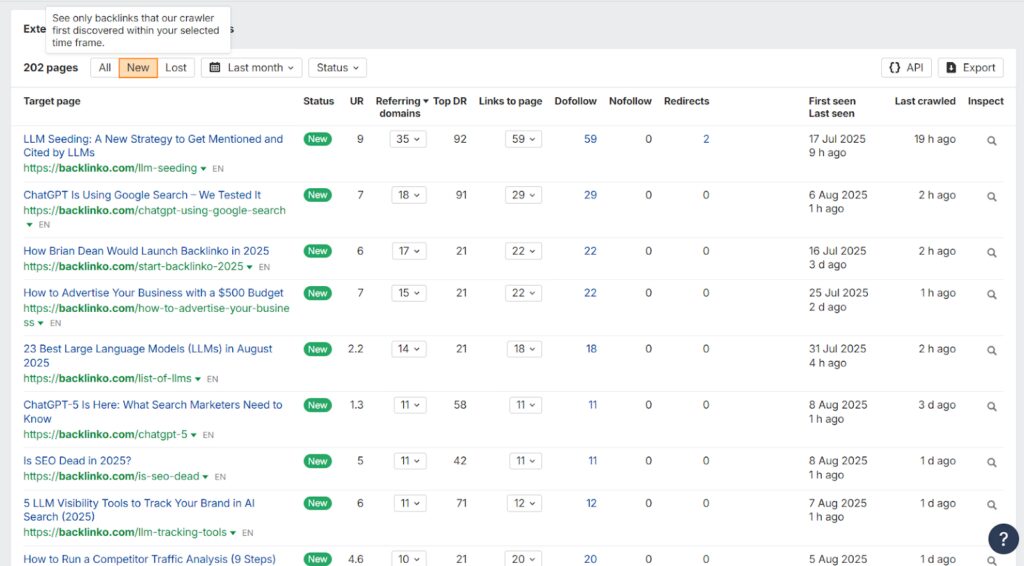
Other ways to surface trending topics? Use tools like Google Trends or Exploding Topics.
Step 2: Choose Content Formats That Attract Links
When looking for link‑worthy topics, you will get an idea of the most-linked-to format for your content.
Some formats have a long history of attracting backlinks because they solve problems in a way that’s easy to cite, share, or reference.
Here are four of the best.
Original research & data studies
According to Neil Patel's study from February 2025, original research is the second-best link magnet, beaten only by free tools.
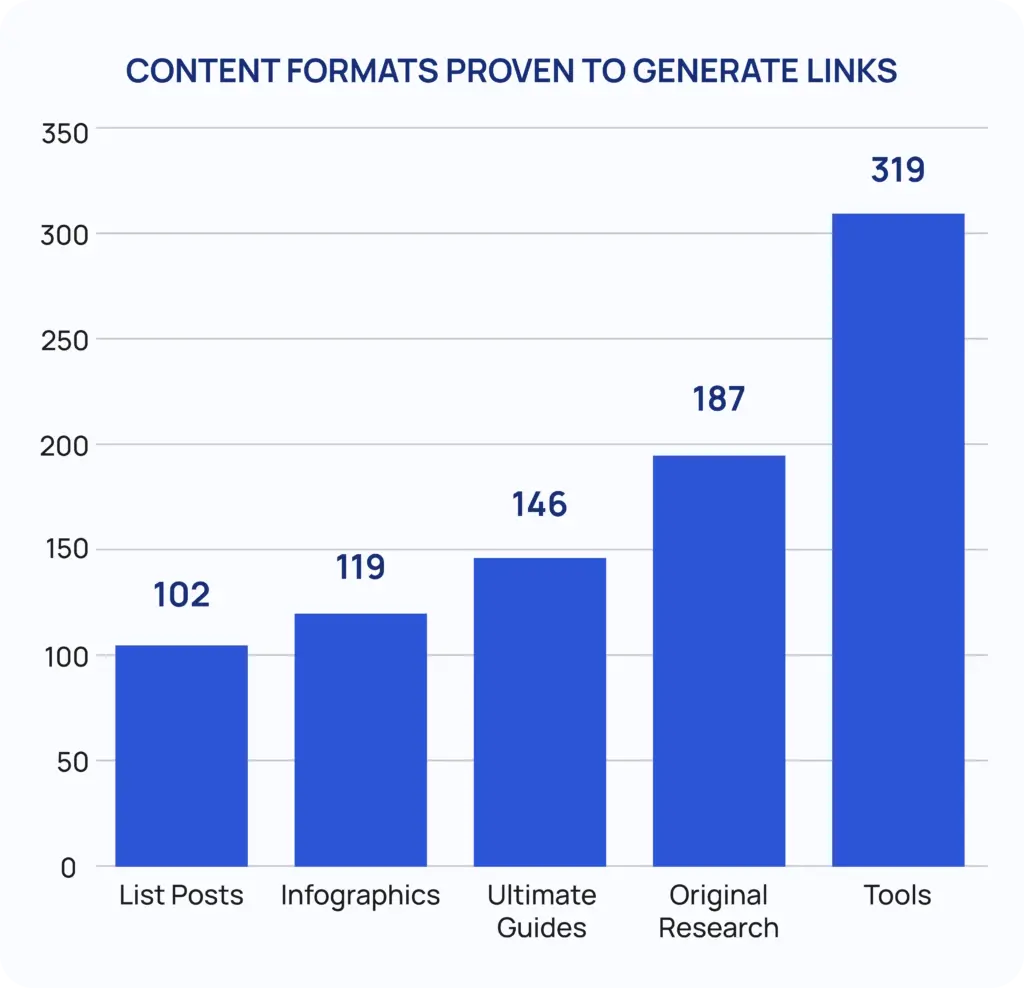
I couldn't agree more. Our State of Link Building Report, based on responses from over 500 industry experts, is our best-performing content asset when it comes to links.

Journalists and writers are desperate for fresh, credible data because it saves them the work of running their studies. Which is expensive and time-consuming.
If you can gather unique statistics or insights in your niche, you’ll create a “go‑to” reference. And get links.
Ultimate guides
Comprehensive guides were scored right after the original research in the NP study.
The reason? They consolidate information into one resource, which makes them more attractive than fragmented alternatives.
As long as you keep them updated, of course!
Backlinko has turned ultimate guides into an ultimate link-building asset.
Lots of their articles, including the complete list of ranking factors mentioned above, are linked to as a benchmark resource.
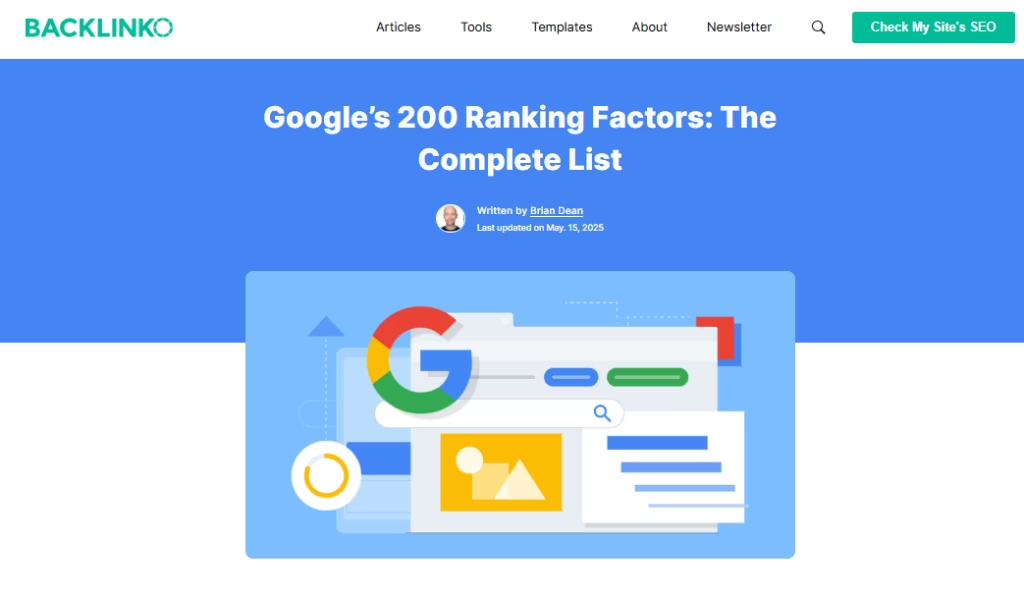
Case studies
Case studies combine storytelling with proof. They show exactly how something was achieved, which makes them credible and actionable. And highly linkable.
Just check out the TikTok for Business case study that has attracted over 750 links from nearly 400 unique domains.
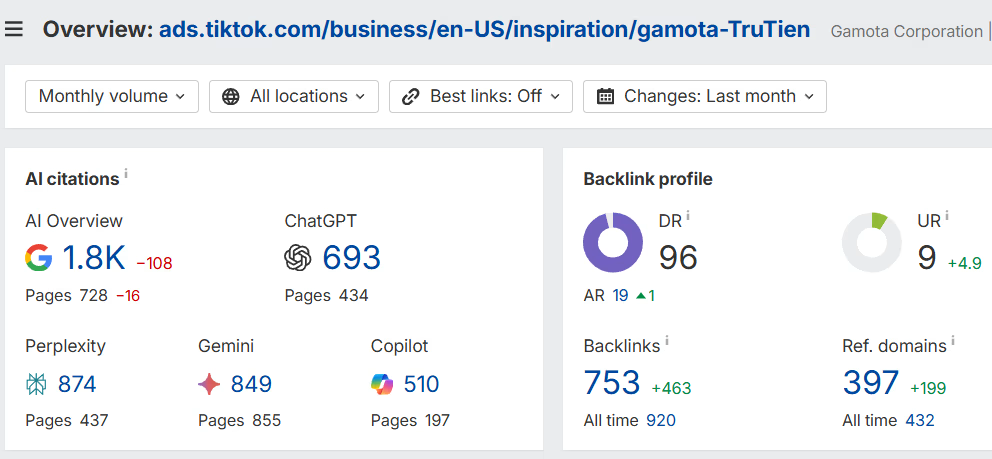
Infographics & visual explainers
Infographics also make complex data digestible and shareable. When you package information into a clean, visual format, website owners will embed it to add value to their pages. With a link back.
For instance, I've lost count of how many times I have seen this infographic from Statista/Semrush this week. LinkedIn, Reddit, Substack, you name it. People are sharing it everywhere..
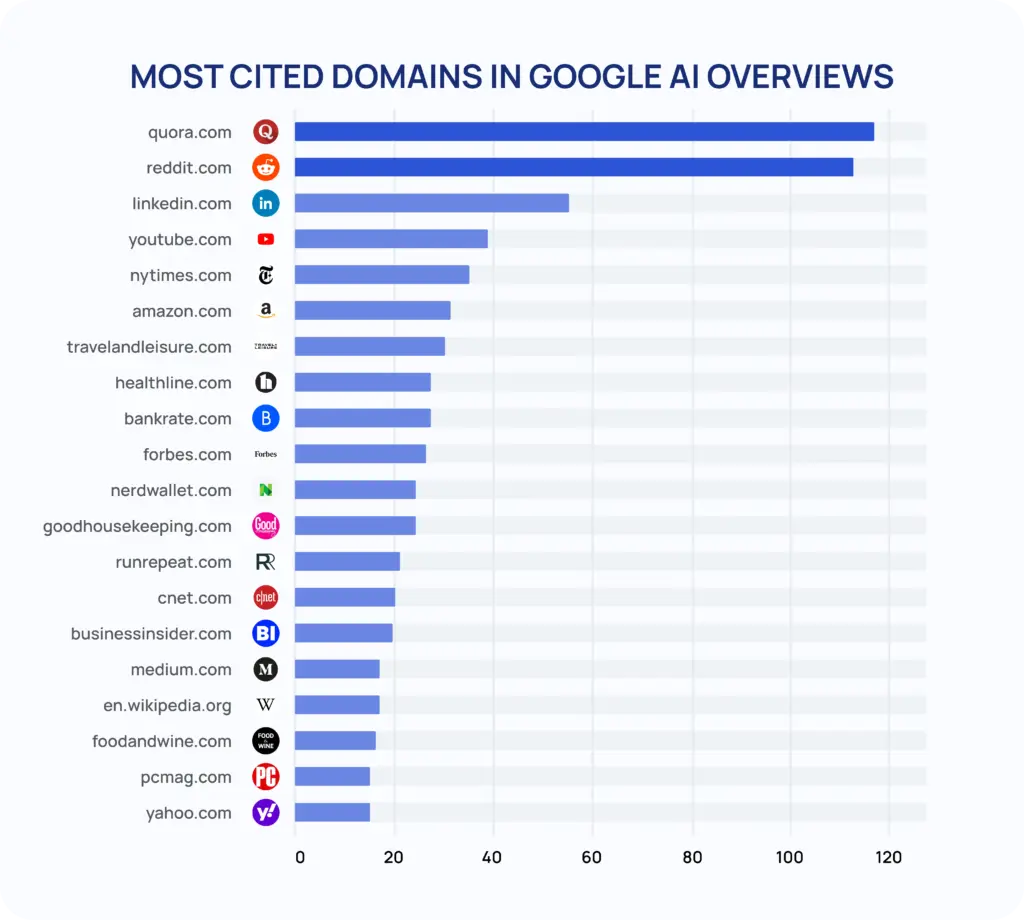
Step 3: Create Something Better
Finding a strong topic and the right format is only half the battle. To become the go‑to resource in your niche, you need to outdo what’s already out there.
Here’s how.
Tackle unanswered reader questions
Here's the truth: Even high‑performing content often leaves gaps. And fails to answer all user questions.
This is your opportunity!
By addressing these overlooked questions, you create a resource that feels more complete and directly meets readers' needs.
This increases engagement and boosts the likelihood of earning backlinks because authors want to cite the “full picture.”
How do you find such questions?
Here's my process:
- Plug all top-performing articles into ChatGPT and ask it to extract all questions that they answer.
- Search Reddit and Quora for relevant threads, and export them into PDF files.
- Ask ChatGPT to extract all questions asked by the community members.
- Cross-reference the two lists to identify questions and problems that existing content doesn't address.
Pro Tip: Use GigaBrain, a dedicated Reddit AI search engine, to streamline your research.
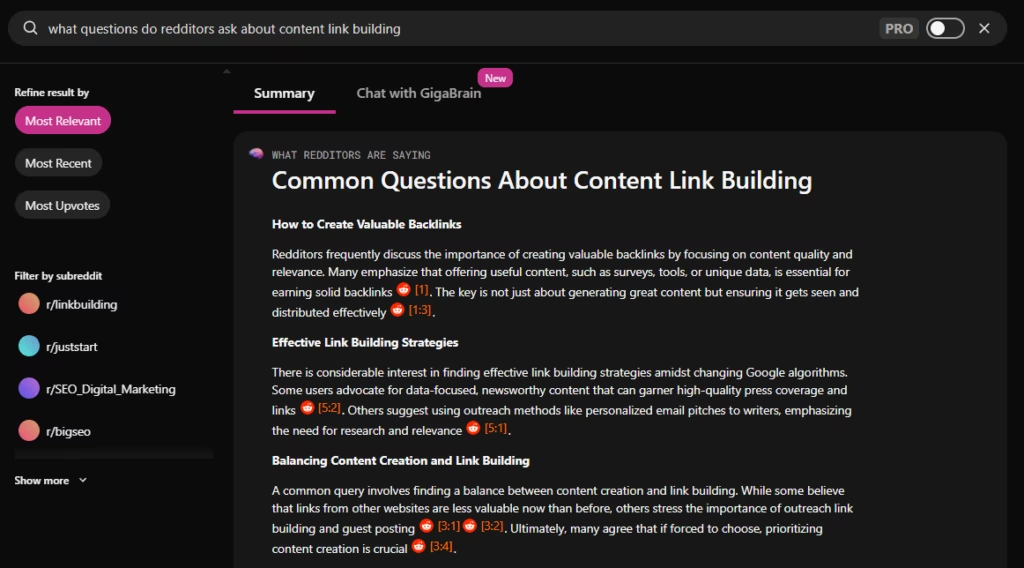
Update outdated information and stats
Updating out-of-date facts and data is the quickest way to improve your content linkability.
Search engines love fresh content, and so do readers. It signals to them that you're trustworthy and on top of your game.
That's why we regularly inspect our competitors' top‑linked content for outdated references and replace them with the latest data.
Here's an example of an article by Semrush about unlinked brand mentions. There's nothing inaccurate about the article, but it doesn't mention the latest stats about unlinked mentions or their impact on AI search visibility.

Improve design and visuals (charts, infographics, custom graphics)
Writing informative content isn't enough to link.
It must also be visually pleasing and accessible.
Walls of text are just the opposite of that.
So break them up with visuals, infographics, and charts, and make your content stand out.
You've seen the data: webpages with 6+ images get 2.6x more page views, 3.6x more shares, and 5.5x more backlinks.
Bonus benefit: Visuals keep the readers on the page. Longer dwell times signal to Google that the content satisfies the search intent. Which boosts its rankings.
Add more depth, examples, or case studies
Adding valuable, in-depth information, examples, case studies, or UGC content, weaving in multiple expert perspectives, is another way to make your content stand out.
"This works because comprehensive content is often seen as more authoritative by other websites, increasing the likelihood of receiving backlinks," explains Hone John Tito, co-founder of Game Host Bros, a gaming platform with millions of users around the world.
As an example, he gives a guide that gained a number of backlinks after they beefed it up with detailed chapters on advanced settings, common troubleshooting advice, user testimonials, and competitor comparisons.
Weaving in diverse perspectives from industry experts makes content more linkable, too, according to Andrew Morton of Equator:
When working with a client in the healthcare industry, we used quotes from named doctors and consultants to describe the healing process for specific surgeries and procedures. These made linking to these pages much more natural, and the linked content became a home for that expert source of information.
Make it more actionable with templates, checklists, or data tables
Lots of content is theory-heavy but light on practical value.
Why? Because it's written by people who often don't have practical experience with things they write about. They're comfortable writing about the "what" and "why" because it's easy to research it. However, they don't know how to do things, so they skim over the practical sections.
That's your chance to beat them!
Imagine your readers in the middle of a task, desperately Google for help. And give them what they need to complete it. A guide with instructions, a checklist, or a data table. Make it so detailed that they don't need any other resources to get the job done.
And they will link to your content! Like this guide to making homemade cleaning sprays by Good Housekeeping, which has been linked from 1.9k unique websites.

Step 4: Promote Your Content with Targeted Outreach
It's simple: to maximize the link-building potential of your content assets, you must promote them actively via targeted outreach.
“If you write great content, people will link to it” is one of the biggest SEO myths.
Why? Because people won't find it. I mean, eventually, they will. Just not as many as you want. And it will take forever.
Here's how we promote our link magnets:
1. Build your outreach target list
- Use Ahrefs or Semrush’s “Backlinks” report to find sites that have already linked to similar content. These sites have proven interest in your topic and are far more likely to link to a better, updated version.
- Use PR software like Respona, Roxhill, or Pitchbox to find journalists in your niche.
2. Craft your pitch angle
- Show exactly how your resource improves on what they’ve already linked to — whether it’s more up-to-date, more complete, or visually stronger. Personalize each message by referencing their site and the exact page where you saw the link.
- If they haven't linked to similar content before, explain why their audience might find it interesting and suggest a page they could link from.
Here's what your outreach email may look like:
Outreach email structure:
- Greeting and quick intro.
- Mention the resource they’ve linked to.
- Explain why your piece of content is worth adding.
- Include the link.
Here's the real kicker:
Don't wait with promotion until you publish the content. Start way before to build up the anticipation.
For example, share early access or snippets of the data with industry leaders and journalists, like we did with our State of Link Building report.
Here’s the kind of message we used to share it with the Search Engine Land team.
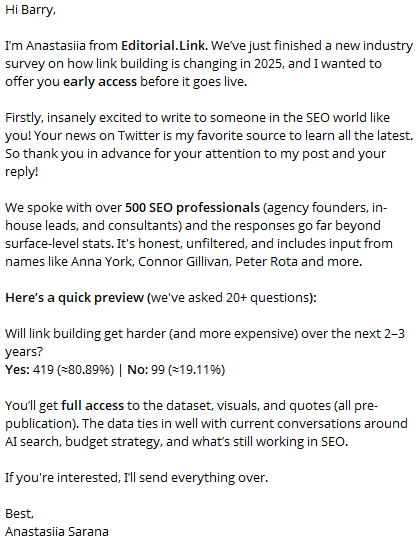
The result?
A write-up summarizing the key findings on their website. And a DR90 backlink.
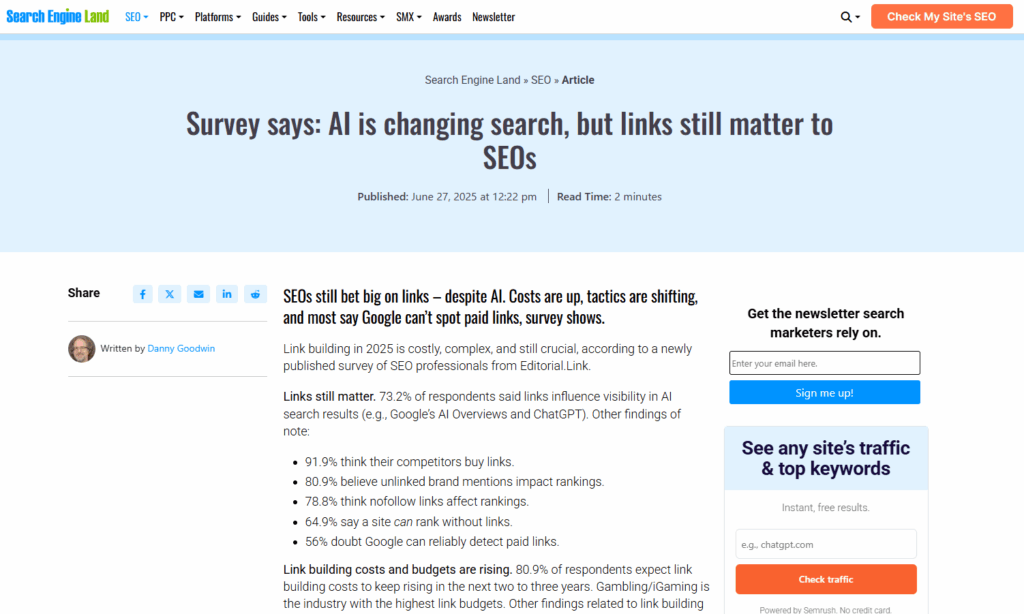
Pro tip: Leverage LinkedIn. We can see it often outperforms cold email. Connect with site owners, editors, or journalists there, engage with their content, and then send your pitch. Such an approach feels less transactional and more collaborative.
If you can research your target person and reach out via a personalised message on LinkedIn, you are more likely to get a response.
Step 5: Repeat and Scale the Process
The most successful content link building isn’t a one-off campaign — it’s a system you can run again and again.
Start by keeping a spreadsheet (or project board) that tracks:
- Topics that performed well and why they worked.
- Outreach contacts, segmented by industry, niche, or content format.
- Results, including links earned, referring domain quality, and traffic impact.
Once you’ve identified what works, reuse those winning formats for new topics. This allows you to scale faster because you’re building on a proven foundation rather than starting from scratch each time.
Finally, don’t forget maintenance. Update older content regularly to maintain — and even grow — your link profile over time.
Eric Jensen, the Content Director at Hexxen, recommends an approach he calls “rolling content refresh”:
You build a proven, link-worthy format, like a quarterly “State of the Industry” report, monthly statistics roundup, or annual “Ultimate Guide,” and set a fixed schedule to update it with new data, examples, visuals, etc. The core framework stays the same, so the production time drops with each refresh.
Breadnbeyond, an Indonesian video production company, updates its resources every quarter to stay in the game:
We make sure to update and add fresh, relevant information regularly… Every quarter, we add new tools, update outdated info, and replace any discontinued services.
Final Words
Building backlinks with content isn’t about luck — it’s about following a repeatable system.
You start by finding proven link-worthy topics, choose the formats that naturally attract citations, create something better than what exists, promote it strategically, and keep refining your process.
If you’re ready to skip the trial-and-error and scale your link-building efforts without the guesswork, the team at Editorial.Link can help you make it happen.





